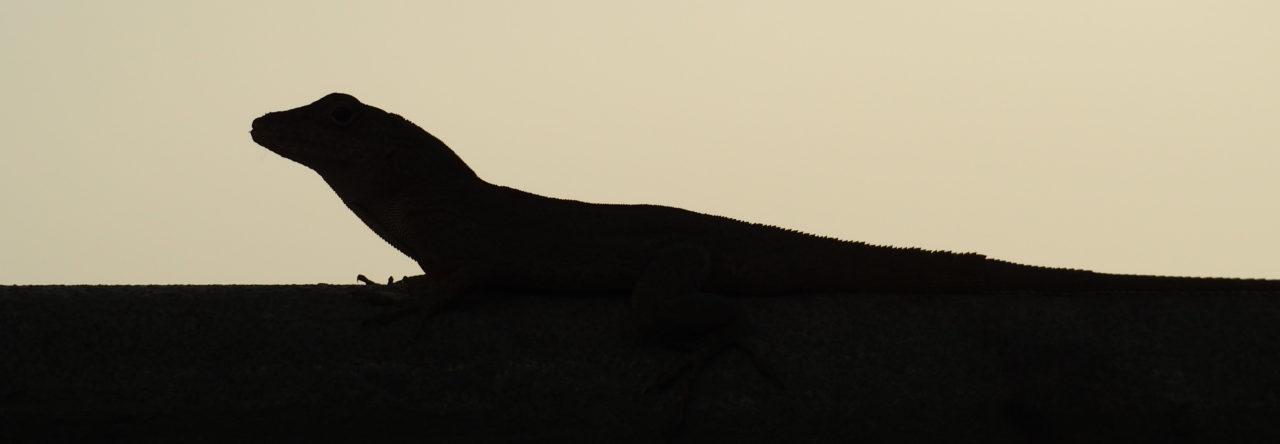Travis Hagey presented some new results from his ongoing research on the evolution of functional traits in lizards. Travis normally works on geckos, but frequently includes Anolis species in his studies. Last year at Evolution, Travis told us about toepad evolution by comparing gecko toepads to those of anoles and skinks. Along the same vein, this year at JMIH Travis talked about patterns of limb-length across different lizard groups.
 Travis started with anoles as an example of morphology being correlated with habitat use. As we all know, anole limb length is associated with structural habitat. Lizards like Anolis occultus (a twig anole) use thin perches and have very short legs. Other species that perch on broader substrates tend to have longer legs. Travis is interested in finding out if this pattern holds for other groups of lizards.
Travis started with anoles as an example of morphology being correlated with habitat use. As we all know, anole limb length is associated with structural habitat. Lizards like Anolis occultus (a twig anole) use thin perches and have very short legs. Other species that perch on broader substrates tend to have longer legs. Travis is interested in finding out if this pattern holds for other groups of lizards.
He started by comparing anoles to geckos to see if relative limb length differed between the groups. He accumulated an impressive database of hindlimb lengths from many gecko and  anole species and when he looked at the relationship between hindlimb length and body size (SVL), he found that for a given body size anoles tended to have longer limbs than equivalently sized geckos. He then added in data for a number of species from Liolaemus, Tropidurus, and Phrynosomatidae. Interestingly, he found that these other groups all clustered with the anoles. This suggests that there are possibly two relationships between limb-length and body size across lizards.
anole species and when he looked at the relationship between hindlimb length and body size (SVL), he found that for a given body size anoles tended to have longer limbs than equivalently sized geckos. He then added in data for a number of species from Liolaemus, Tropidurus, and Phrynosomatidae. Interestingly, he found that these other groups all clustered with the anoles. This suggests that there are possibly two relationships between limb-length and body size across lizards.
 Travis ended by commenting on how this might relate to habitat use. He analyzed hindlimb length by perch diameter for anoles (red line) and geckos (black line). Geckos, it turns out, have a different relationship between perch use and limb length than anoles: geckos with shorter limbs tend to use broader diameter perches! Travis is still working on this research and is looking for data on limb length for many groups. If you have hindlimb length data from lizards you should email Travis to help out!
Travis ended by commenting on how this might relate to habitat use. He analyzed hindlimb length by perch diameter for anoles (red line) and geckos (black line). Geckos, it turns out, have a different relationship between perch use and limb length than anoles: geckos with shorter limbs tend to use broader diameter perches! Travis is still working on this research and is looking for data on limb length for many groups. If you have hindlimb length data from lizards you should email Travis to help out!
- Puerto Rico Herpetology Symposium - September 21, 2023
- Anole Symposium This Fall? - July 14, 2023
- Parallel Urban Adaptation from Phenotype to Genotype in Anolis Lizards - January 20, 2023



bolko
That agrees with observations of various geckos. I haven’t the chance to observe any anole, but geckos show that trend. Scansorial species of broad surfaces like mediterranian house geckos or tokay geckos have quite short legs, while true arboreal species that navigate through sticks like crested geckos have much longer legs, especially the hindlimbs, and it seems also that in this species they are adapted for jumping as well.